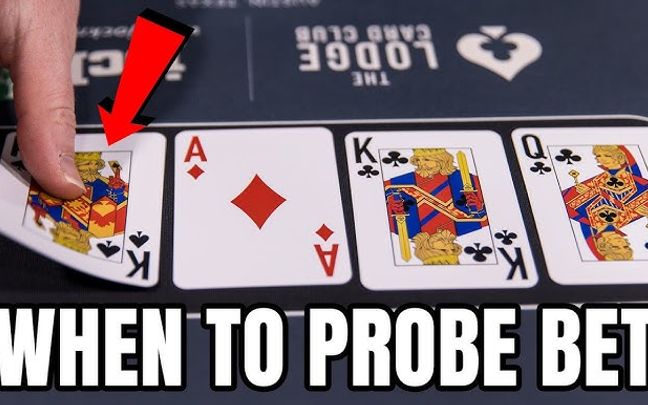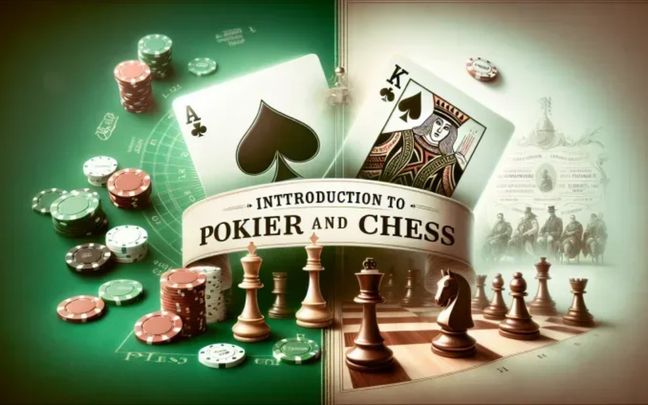"What is stake in poker?" is a question every player should thoroughly understand before diving into the game. Knowing the concept of stake not only helps you grasp the appropriate betting level but also plays a crucial role in long-term strategy.
This article will help you explore the concept of "What is stake in poker?", from how it works to how to manage it to optimize profits and minimize risks.

Managing stakes in poker helps you maintain a long-term bankroll.
What is Stake in Poker?
Many beginners often wonder, "What is stake in poker?" Simply put, stake is an important term that refers to the level of money involved in betting within the game. Specifically, stake determines the amount you can bet or buy-in when participating in a poker hand.
Stakes are typically represented by two numbers that denote the small blind and big blind amounts. For example, a $1/$2 stake means the small blind is $1, and the big blind is $2.
Stake not only represents the betting limits but also reflects the level of the game, the experience of the players, and the potential risks and rewards in the hand. Below is a brief overview of common stakes in poker for those asking, "What is stake in poker?"
-
Micro Stakes: These are games with very small bets, usually ranging from $0.01/$0.02 to $0.10/$0.25. Micro stakes are often for beginners or those looking to play recreationally without the risk of losing significant amounts of money.
-
Low Stakes: These stakes typically range from $0.25/$0.50 to $1/$2. This level attracts many amateur and semi-professional players, providing a relatively safe environment financially, while still offering opportunities to learn and hone skills.
-
Mid Stakes: With stakes ranging from $2/$4 to $5/$10, this level is for players with good experience and skills. Mid stakes games are more competitive, and the amounts won or lost can be significant.
-
High Stakes: These games involve large bets, from $10/$20 and above. High stakes are usually for professional players or those with large bankrolls. High stakes matches can lead to substantial wins or losses and are often followed by the poker community.
-
Nosebleed Stakes: These are games with extremely high bets, typically exceeding $100/$200. Only top poker players or the very wealthy participate in these games. Nosebleed stakes games are often the stage for historic hands and dramatic comebacks.
Additionally, stake can also refer to the act of staking a player. In this scenario, a player receives money from an investor (staker) to participate in a game, and then shares the profits if they win. This strategy is common in poker tournaments, where buy-ins can be very large.
In summary, stake is a critical factor in poker, determining the level of betting and influencing how players approach the game. It is an essential part of bankroll management, determining playing style, and ultimately, the potential for success in poker.

Understanding what stakes are in poker helps you choose tables that match your financial capacity.
Detailed Guide on How to Manage Stakes in Poker
After understanding the concept of what stakes are in poker, the next step is to learn how to manage them. Managing stakes in poker is a crucial aspect to ensure that you can participate sustainably and over the long term while optimizing profits and minimizing the risk of going bankrupt.
Stake management involves determining the appropriate betting levels based on personal finances, choosing the right tables for your skill level, and adjusting strategies according to your bankroll. Below is a detailed guide on how to manage stakes in poker.
Determine Your Poker Bankroll (Bankroll Management)
A poker bankroll is the amount of money you set aside exclusively for playing poker. This money is separate from your other living expenses and is only used for poker. Effective bankroll management is a core element of stake management. The key bankroll management rules include:
-
Never Play with Your Entire Bankroll: A critical rule is never to bet your entire bankroll on a single hand or tournament. Instead, only use a small portion, such as 5-10% of your bankroll, for each session.
-
Allocate Your Bankroll for Different Stake Levels: For each stake level, you need to have a sufficiently large bankroll to withstand the natural variance in poker. Generally, cash game players should have at least 20-40 buy-ins for the stake level they are playing. Meanwhile, tournament players should have around 100 buy-ins.
Choose the Right Stakes
Choosing the right stake level is essential after understanding "What are stakes in poker?". The stake level should be chosen based on your playing experience, bankroll, and personal goals.
-
Stake Selection for Beginners
Micro Stakes: This is the ideal stake level for beginners, with small blind/big blind usually ranging from $0.01/$0.02 to $0.10/$0.25. At this level, you can learn how to play and develop your skills without facing significant financial risks.
-
Stake Selection for Intermediate Players
Low and Mid Stakes: Once you have more experience and have grown your poker bankroll, you can start playing at low stakes (from $0.25/$0.50 to $1/$2) and mid stakes (from $2/$4 to $5/$10). These stakes require better skills and stricter bankroll management.
-
Stake Selection for Professional Players
High Stakes and Nosebleed Stakes: These stakes are for professional players or those with large bankrolls. These games often come with high risks but also the potential for significant profits. Players at this level need excellent skills and mental preparation to handle the financial pressure.
Adjust Stakes Based on Results
Poker is a game of variance, and even the best players will experience losing streaks. Effective stake management includes adjusting your bet levels based on your results.
-
When Your Bankroll Increases: If you're on a winning streak and your bankroll grows, you may consider moving up to a higher stake level. However, ensure that your bankroll is large enough to support the new stake level.
-
When Your Bankroll Decreases: If you're losing and your bankroll drops significantly, consider moving down in stakes to protect your remaining funds and avoid going broke. This allows you to continue playing without the stress of financial strain.
Apply a Strategy Suited to Your Stakes
Your playing strategy should be adjusted according to the stake level you're participating in.
-
Micro Stakes: Players at this level are often less experienced and tend to play loosely. Therefore, the best strategy is to play tightly (selecting only strong hands) and be aggressive when you have a strong hand.
-
Low and Mid Stakes: At these levels, players are generally more skilled, so you need to be more flexible in your strategy. Employing more complex tactics such as bluffing or semi-bluffing can be effective.
-
High Stakes: Players at this level are usually very skilled and capable of reading situations well. You need a balanced and nuanced strategy, combining opponent reading and continuous adjustment of your play style.
Track and Evaluate Results
Finally, tracking and evaluating your playing results is crucial in stake management. You need to record the outcomes of each session, including the amount won or lost, your feelings while playing, and how you executed your strategy.
This will help you:
-
Identify Winning and Losing Trends: Know when you typically win or lose to adjust your strategy accordingly.
-
Spot Mistakes: Review mistakes made during play to avoid repeating them in the future.
-
Adjust Your Playing Plan: Based on actual results, you may need to modify your stake plan or strategy for better performance.
Patience and Discipline
Patience and discipline are two important qualities in stake management. Patience helps you avoid rushing decisions when winning or losing, and discipline ensures you stick to your established bankroll and stake management rules.
Remember the concept of "What are stakes in poker?" and keep in mind that poker is a long-term game, so protecting your bankroll is the key to achieving sustainable success.
Self-Assessment and Emotional Management
Emotions can greatly influence your decisions when playing poker. During losing streaks, players are often prone to negative emotions, leading to poor decisions. Always maintain a calm mindset and don't let emotions dictate your strategy. If you feel pressured or stressed, it's best to take a break and return when your mood is stable.
Managing stakes in poker is a complex but necessary skill for becoming a successful player. It requires an understanding of bankroll management, the ability to assess and adjust strategies, and the discipline and patience to follow through.

Controlling stakes in poker is a key factor in optimizing profits.
By remembering the definition of "What are stakes in poker?" and applying the correct stake management principles, you not only protect your finances but also create opportunities to develop your skills and optimize profits in poker.





























